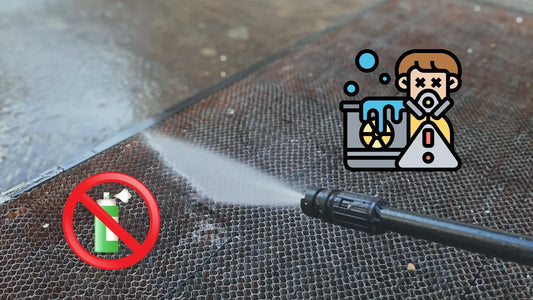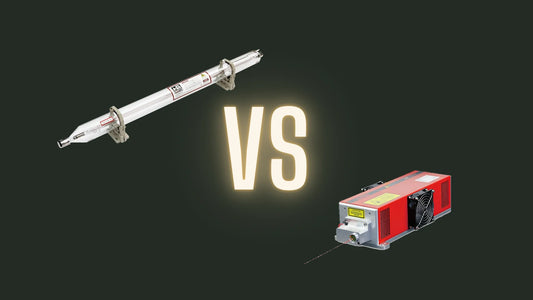
CO2 LASER VS RF LASER
CO2 Laser vs RF Laser: Which is the Best Choice for Your Projects?
Are you considering investing in a laser machine for your cutting, engraving or marking projects? The choice between a CO2 laser and an RF laser can seem complex. Both technologies offer specific advantages, but which one is best suited to your needs? In this article, we will compare CO2 and RF lasers in detail to help you make an informed decision.
What is a CO2 laser and an RF laser?
CO2 laser
CO2 laser is one of the oldest and most widespread laser technologies. CO2 laser machines equipped with glass tubes are versatile tools used in many industries for cutting and engraving various materials.
- Energy source:
- CO2 Tube: An electric current excites a mixture of gases (CO2, nitrogen, helium) in the glass tube, creating an intense, coherent laser beam.
- Glass tube: Glass tube is sensitive to shocks and temperature variations, which can limit its lifespan.
- Beam quality:
- Power: The power of glass tube CO2 lasers varies depending on the model, but typically ranges from a few watts to several hundred watts. The higher the power, the greater the cutting speed and penetration depth.
- Reliability and maintenance:
-
Lifespan: On average, the lifespan of a glass CO2 laser tube is estimated to be between 1500 and 6000 hours. However, this duration can vary considerably depending on the frequency of use and the power regularly used.
- Cooling: Glass tubes require water cooling to maintain optimum operating temperature.
RF laser

RF laser, or radio frequency laser, not to be confused with Diode Laser, is a recent technology. It uses radio frequency energy to excite the laser medium, usually a gas mixture similar to that of the CO2 laser.
- Energy source:
-
Radio Frequency: Unlike traditional CO2 lasers, RF lasers use radio frequency excitation to ionize the laser gas. This method provides better stability and longer life for the laser tube.
-
Metal Tube: RF laser tubes are usually made of metal, which gives them increased robustness and better heat dissipation.
- Beam quality:
-
Fine, focused beam: RF lasers produce a very high quality laser beam, which allows for extremely precise engravings and cutting, even on very small surfaces.
- Beam Stability: Laser beam stability is essential to ensure consistent and uniform work quality. RF lasers are renowned for their excellent stability.
- Reliability and maintenance:
-
Extended Lifespan: Due to their robust design and excitation mode, RF laser tubes have a significantly longer life than traditional laser tubes.
- Reduced Maintenance: RF laser machines require less maintenance, reducing operating costs.
What are the advantages and disadvantages of each technology?
- CO2 laser:
-
Advantages: Generally lower purchase cost, wide variety of compatible materials, excellent cutting quality for non-metals.
-
Disadvantages: Shorter life, may require more frequent maintenance. Bulky in a laser machine in addition to water cooling (water cooling).
- RF Laser:
-
Advantages: Longer life, high cutting speed, better beam quality. Small footprint and without water cooling.
- Disadvantages: Higher purchase cost.
How to choose the right laser for your project?
The choice between a CO2 laser and an RF laser will depend on several factors:
- Your budget: RF lasers are generally more expensive to purchase.
- Production volume: If you have a high production volume, an RF laser with its longer lifetime may be a worthwhile investment.
- Required Cut Quality: Both technologies provide excellent cut quality, but RF laser may perform slightly better.
Choosing between a CO2 laser and an RF laser is not always easy. By considering your specific needs and comparing the advantages and disadvantages of each technology, you will be able to select the ideal laser machine for your projects.
Some links may be affiliated




